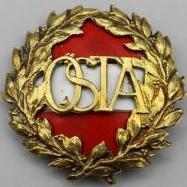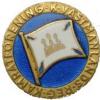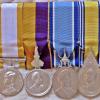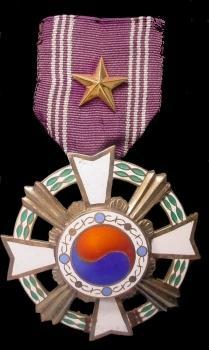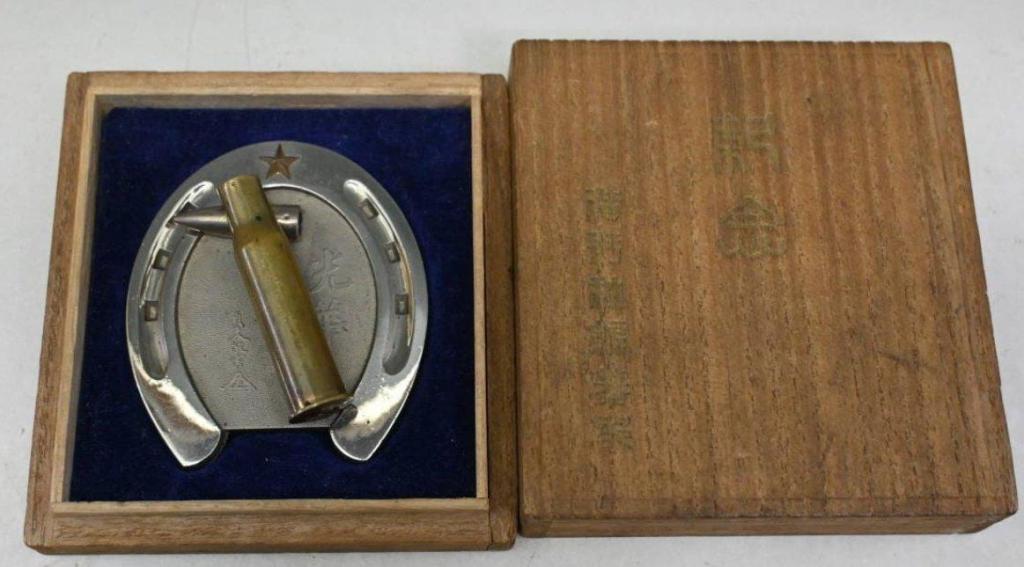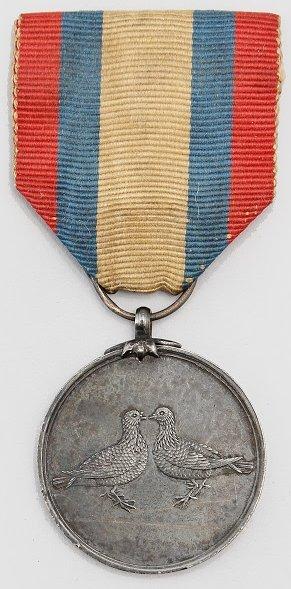
Dfifer
Past Contributor-
Posts
46 -
Joined
-
Last visited
Dfifer's Achievements
-
I visited Jungil-sa in 1999. I was able to talk to the son of the original owner. It appears that the grandson of the original owner or a new owner now controls the company. They now have a website that went live on 2-25. Unfortunately the site is only in Korean. It is located at http://jungilsa.com/index.php It primarily shows only the current Orders, Merit Medals and Commendations of the central South Korean government. However, Jungil-sa no longer manufactures these medals. There are no pictures of any medals that they have made or are currently manufacturing. In June 1986, the medal production rights for Korea's Orders, Merit Medals and Commendations were transferred to a division of the Korea Minting, Security Printing and ID Card Operating Corporation (KOMSCO; Korean: 한국조폐공사). KOMSCO is a state-owned corporation. The ministries have their own sets of medals and commendations, and as far as I can determine, are not required to use the KOMSCO, but probably do. It is my contention, that the inferior quality of Korea's current ODMs is due to the fact that they are produced by government employees. The majority of Korean Medals manufacture before 1986 were of much better quality and a large percentage of these earlier medals were manufactured by Jungil-sa. If you want to visit the company, there is an address and map on their website.
-
REPUBLIC OF KOREA (SOUTH KOREA) TIGER MEDAL
Dfifer replied to heusy68's topic in South East & East Asia
Sorry, I should have made the connection earlier. Here is a picture of the Order of Military Merit, 2nd Class. These were awarded prior to August 1951. In August, the enameling was changed, and the award was renamed the Ulchi Medal. -
REPUBLIC OF KOREA (SOUTH KOREA) TIGER MEDAL
Dfifer replied to heusy68's topic in South East & East Asia
Once again, it looks like I am late to the party. I saw this medal before in the Korean War Museum, but there was no elaboration on the description. It read: 타이거 여단이 제작하여 수여한 공로 메달 A service medal produced and awarded by the guerrilla Tiger Brigade. However, the Korean War Museum has since added more information, and I quote: “It is the Tiger Brigade medal. It is in the form of a circular medal attached to a small number. The diameter of the medal is 6.2 cm and there is a clothespin on the back. A roaring tiger is engraved on the front of the medal. It was awarded by the US military in charge of the guerrilla Tiger Brigade, which was based in Ganghwa Island under Unit 8240 of the UN Command during the Korean War, right before it was incorporated into the ROK Army immediately after the ceasefire.” Unfortunately, the museum does not have a picture of the reverse or even indicate if there is an inscription on the reverse. I think it was produced by the company of Jung Il Sa, which did many of the original Korean medals during the War. -
The only thing missing on the last picture is the bullet casing and slug. Go to: https://asiamedals.info/threads/bullet-case-on-a-horseshoe-commemorative-paperweights.26592/#post-358563 If the link doesn't work, please refer to the Medals of Asia website (https://asiamedals.info/) and search for Horseshoe. Enjoy
-
You are correct, it can only be searched in 3 month increments. During the war, Korea issued about 20,000+ military awards per year. But in 1954, the first full year after the armistice, Korea issued 70,000+. So Korean War medals can be anywhere from 1950 to 1954. In 1955, Korean Orders of Military Merit dropped to 8,000. One American Medal of Honor winner, who was killed during the war, did not get his Korean Award until 1954. I tried searching for the Korean term for New Zealand 뉴질랜드, but nothing came up. If and when I can find some time, I will try to figure out how they are listed. If you can provide one or more award dates, it would help to figure it out. Don
-
Dfifer started following Korean Medals Roll now online
-
The Korean government has put their medal roll online, 1948 to present. It is located at https://www.sanghun.go.kr/nation/participation/sangopen/sangInfoOpen.do It is entirely in Korean and unfortunately, you cannot access it in English. You can submit dates (ie. 1951-01-01) and search for all entries from one particular date to another. There is a maximum of three months for any one search, but you can make multiple searches. There are two major problems with the database. 1. All awards cited use the current award names, so if you have an Order of Military Merit, 1st Class, it will be listed as a Taeguk Medal. 2. Non-Korean names have been transliterated into Korean, so transliterating the names back into the English is hit or miss, mostly miss. If anyone is having issues, let me know. You can contact me through my website, www.Koreanmedals.com. Enjoy Don Pfeifer
-
Republic of Korea (South Korea) Martyred Youth Medal
Dfifer replied to heusy68's topic in South East & East Asia
Sorry, I'm a little to the party. This is one of those medals that has been driving me crazy for more than twenty years. I am now retired and have the time to do better and more thorough research. I have also learned a thing or two about the nuances in dealing with the internet in Korean. The “Patriotic Youth Association” is a youth association, and it is a somewhat accurate translation of 청우회. If you plug 청우회 into google, you will get a ton of youth organizations, none of which, as far as I can determine, are connected to the medal. The actual name on the medal is “Cheong Woo Hoe” 청우회 (晴雨會). This translates as Rain (or) Shine Association. Meant to be used in a manner similar to the U.S. Post Office unofficial motto, “Neither snow nor rain nor heat nor gloom of night stays these couriers from the swift completion of their appointed rounds”. The association was made up of former members of numerous patriotic youth organizations that existed before and during the Korean War. Its purpose was to remember and commemorate the history of the anti-communist struggle and those 17,274 youths who had perished in that struggle. In 1969, they erected a memorial monument on Namsan (South Mountain) in Seoul. The date that is on the medal, Oct. 11, 1963, is the date on which the “Cheong Woo Hoe” was founded. You can see more information on this medal on my Koreanmedals.com website, under Republic of Korea/Non-governmental Medals. Sorry I couldn't make the party earlier. Don BTW, I forgot to mention, Park Chung Hee donated money to create the Memorial Monument on Namsan. And, I am speculating, that since most of Namsan is protected government property, he probably helped to clear a few hurdles along the way. -
Korea became a protectorate of Japan with the signing of the Japanese–Korea Treaty of 1905; thereafter, Japan ruled the country indirectly through the Japanese Resident-General of Korea. On July 23, 1909, the Korean Government issued Imperial Ordinance #67, by which all matters concerning the Red Cross Society were transferred to the Red Cross Society of Japan. The 1905 Imperial Rescripts concerning the creation of the Red Cross Hospital and Society were formally annulled. On Dec. 10, 1910, after Japan’s forced annexation of Korea, the Korean Red Cross become a chapter of the Japanese Red Cross. It was claimed to be necessary because the Principles of the International Red Cross Movement only allows for one national society to be set up in a country. In other words, the Japanese Red Cross was in Korea from 1910 until Aug. 15th, 1945. To date, I have never seen a Red Cross medal from this time period that references Chosŏn 조선 (朝鮮) (Korea). BTW, I forgot to mention. The ribbon is from the Korean Empire “Crown Prince Wedding Commemorative Medal " 皇太子 嘉禮 記念章 (황태자 가례 기념장)
-
The comment above about the line indicating the DMZ is, in my opinion, not correct. If you look in the upper right hand corner, you will see another line. These indicate the borders of China and Russia. These lines do show up in the original Korean legislation and may or may not indicate the difference between a Korean and Non-Korean manufacturer.
-
Korean Order of Diplomatic Service Merit
Dfifer replied to JBFloyd's topic in South East & East Asia
If anyone is interested, I started a new Korean Medals Website at https://koreanmedals.com/ Earthlink stopped giving free website and started charging. It is still under construction, so please be patient. -
Korean Order of Diplomatic Service Merit
Dfifer replied to JBFloyd's topic in South East & East Asia
Sorry to have been out of touch for so long. Work is driving me crazy. As to miniature medals. Some Korean Orders and medals are available as miniature medals Yak Jang 약장. Korean law requires miniature Medals to be ½ of their normal size, and current law expressly prohibits miniaturizing Orders that are normally worn on a sash or cravat. During the 1950s, most Korea Orders and Medals were breast medals. Miniatures from this time period can be found, but starting in the early 60s, Sashes and Cravats were added to the higher classes. Current legislation also prohibits the wearing of full sized Orders on a sash or cravat while wearing miniature medals of the lower classes. In general, only the 4th and 5th classes of an Order, Merit Medals and Ki Jang can be miniaturized. Because of these prohibitions, miniature medals are rarely found after the 1950s. High ranking officials want to wear their most prestigious Orders at formal events, so miniatures are not needed. All that being said, there is a caveat - There are situations where diplomats and high ranking military officers need to wear miniatures in order to conform with the other attendees of an event, and in these situations, miniatures are known to exist even though they violate the legal codes. (The Korean phrase “Yak Jang” 약장 is also used for "Ribbon Bar".) As soon as I get a little time, I will dig out my Korean miniature collection and post some pictures. -
I think I can be of some help. This ribbon group belongs to a Police Officer. 1st row (L to R) Minister of Home Affairs Commendation Police Commissioner General's Commendation 10 Year Long Service Medal 2nd row (L to R) 20 Year Long Service Medal United Nations Medal Red Cross Medal (Missing Red Cross Attachment) 3rd row (L to R) 1980 Overcoming National Crisis Medal 1984 Pope John Paul II visit to Korea 1985 IBRD IMF Annual Conference in Seoul 4th row (L to R) 1986 Asian Games Service Medal 1988 Olympic Service Medal 1988 Paralympic Service Medal I hope I have been of some assistance. Don Pfeifer
-
UN Medals awarded for the KOREAN WAR and my collection
Dfifer replied to demir's topic in South East & East Asia
There is no problem with calling this medal the "Korean War Service Medal", the "ROKWSM", the "Crossed Bullets Medal", or to use the Korean term the "6.25 Incident Participation Medal". In fact on my webpage, if you look at Yi Ki-Poong's 1951 letter to the Commander in Chief. In the first paragraph, he calls it the "War Service Medal". As the title of my webpage states, "The real story behind the Republic of Korea's War Service Medal, or more precisely, the Republic of Korea's 6.25 Incident Participation Medal". My problem is with all of the "Purported Facts" that are floating around the internet, some of which have unfortunately crept into this website. You commonly find: "In 1951, President Syngman Rhee ordered that the Incident Participation Medal be renamed as the War Service Medal and further authorized the decoration to any troops who were defending South Korea against invasion. In 1954, the South Korean government authorized the now called Korean War Service Medal to all United Nations troops who had fought in the Korean War between the dates of June 25, 1950 to July 27, 1953." As you see from my webpage, Syngman Rhee never ordered the medal to be renamed, and that the medal was offered to all United Nations troops on Nov. 15th, 1951. In none of the Korean Presidential Decrees regarding this medal, does it lay out the basic requirements for earning the medal. That was left up to the Ministry of Defense. I have made several attempts to correct the Wikipedia entry (and others), but to no avail. I put my webpage together to try, in some small way, to clear up some of the BS, that is so common. (I even put a link to my webpage on Wikipedia, only to have it removed. I am assuming that the truth hurts.) And there is also the problem with phony award documents that show up from time to time. As you saw from my webpage, I show one which references Presidential Decree #390, but shows the Crossed Bullets style of the Korean War Service Medal. In putting the webpage together, I took great pains to make sure that anyone who doubts the information that I present, can do the research themselves. And in that regard, I gave them all of the basic information needed to pursue it. In the pursuit of my own research, I only need two things to really complete the story. 1st: Another search of NARA (or the Korean National Archives) to see if the 4th page of Yi Ki-poongs letter exists showing the design of the medal, and, 2nd: to gain access to the Korean Ministry of Defense and see what information they have in their records. One small comment that I should add. Koreans have a great tendency to call historical events by the date in which it happened or first started. The Protectorate Treaty of 1905, the Independence Demonstration of 1919, the Military Coup of Park Chung Hee, etc. are all referenced in Korean by the date. Two quick examples, the Japanese Invasion of Korea (1592-98) is simply called the Imjin War. (Imjin being 1592 in the Chinese 60 year calendar system). The Annexation Treaty of 1910 is known in Korea as the Coerced Treaty, but it is also commonly referred to as "The humiliation of the Nation in the Year of the Dog." I hope I have clarified my earlier comments regarding the misinformation that seems to have crept into this website. -
UN Medals awarded for the KOREAN WAR and my collection
Dfifer replied to demir's topic in South East & East Asia
A little off the beaten path, but there was a post in regards to the the Korean War Service Medal also known as the ROKWSM. The internet is full of misinformation on this medal and now I see that some of this misinformation has crept into this website. If anyone is interested, I have posted a web page which gives the full story on the ROKWSM with all of the support documents that I have been able to find. If anyone is interested you can find the information at http://home.earthlink.net/~kwsm/ I hope it is of some interest to the members. Sincerely, Don Pfeifer -
Korean Military Merit awards to U.S. forces for Korean War
Dfifer replied to pieter1012's topic in South East & East Asia
I have been collecting and researching Korean Orders, Medals and Decorations since '93. As far as I know, the Koreans have never posted any information on the numbers of medals issued to specific countries. In 1983 the Korean Ministry of Government Information, published "Decorations Overview". On Page 255, there is one little reference to 209,555 Orders being issued for the Korean War, but there are no specifics. Just for general information, there were three different design series of the Order of Military Merit issued during the War. The first official design was issued beginning in Oct. 1950. The second design was first issued in May, 1951. The third and final design was issued from Aug. 1951 until 1958. Only the third design series carries the class names of Taeguk, Ulchi, Chungmu and Hwarang. To confuse the situation a little more, I know of one American KMAG Officer who was decorated by the Koreans. For that single action, and due to the confusion inherent in all wars, he received the ribbon bar (from the 1st design Series), then a couple of months later, he received his medal (from the 2nd Series), and then less than a month later, he was given a replacement medal, for reasons unknown (from the 3 series). Now the question arises, was he counted 1, 2 or 3 times. Another piece to add to the confusion. Well after the war ended, the Koreans issued Medals for actions that in some cases had happened years earlier. PFC Walter C. Monegan Jr. (USMC) is a good example. He was killed in Sept. 1950 and received the Medal of Honor. In April, 1954, he was decorated by the Korean Government with the Order of Military Merit, Hwarang with Gold Star. One last little bit of confusion. Between the start of the war on June 25th and October 1950, the Koreans issued a substitute medal, since there was no officially sanctioned Order of Military Merit. For reasons unknown, they continued to issue this substitute medal until at least January of 1951, well after the 1st design series was officially authorized. As far as I have been able to determine, all of these substitute medals went to high ranking American Officers (MacArthur, Walker, Struble, Stratemeyer, et al.). In 1999, I was in Korea and saw some of the original Decoration logbooks used during the war. I do not know if all the logbooks are still in existence. But if they are, and if someone had the time and expertise, a full list could be generated. It would not be an easy task. During the war, the Koreans were using a lot of Chinese Characters in their documents, and many of the foreign names were written phonetically in Korean. I hope in someway, this is of some help to you. Sincerely, Don Pfeifer

